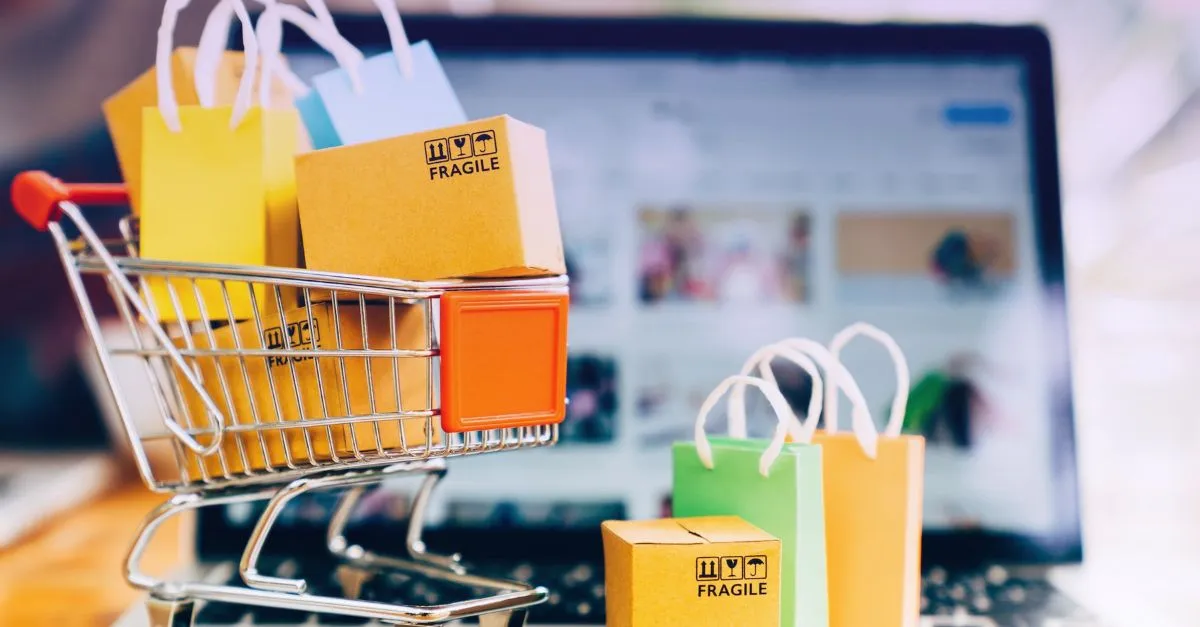Shopify’s April 2025 Shake-Up: Preparing Your Shopify Store for AvaTax Deprecation

Shopify merchants are facing a major change in how they handle sales tax. Avalara’s AvaTax – a popular tax automation tool long used by Shopify Plus stores – is being phased out of the Shopify App Store in April 2025.
Given that every U.S. state with a sales tax now imposes economic nexus rules on online sellers, third-party sales tax automation tools like AvaTax have been crucial in handling multi-state obligations efficiently. For businesses affiliated with Clearco, it’s important to proactively address potential compliance gaps like these before they escalate.
That’s why Clearco has partnered with Kintsugi, the top-rated sales tax app on the Shopify App Store to ensure merchants have updated information on state sales tax, how to file, and the ability to file fast.
What is Sales Tax and How Does It Impact Ecommerce Brands?
As most ecommerce brands know, sales tax compliance gets more complicated the more jurisdictions you sell to and the more types of products you sell. A state can impose a state tax, but there could also be a county, city, or home-rule tax, which can differ wildly from city to city in the same state.
Then, factor in 50 different sets of rules to follow, thousands of different rates for different product categories, and 50 state government portals to navigate. This is what makes sales tax compliance automation such a no-brainer when selling on multiple channels or more jurisdictions.
Shopify’s Decision to Deprecate AvaTax (and Its Impact)
Shopify announced that it will sunset the legacy Avalara AvaTax integration on April 30, 2025. After that date, the old AvaTax app will no longer function or receive support, meaning Shopify stores can’t rely on it for automated tax calculations.
What does this mean for merchants? If you’ve been using Avalara via Shopify, you must take action before the deadline or risk your store not calculating taxes properly on May 1.
Shopify Plus users who relied on AvaTax will need to switch well before April 30, 2025. If no action is taken, you could face serious issues: orders might default to Shopify’s basic tax calculations (which may not be configured for all your needs), or worse, some taxes might not be collected at all, leading to compliance gaps.
To help you navigate this transition, we’ve compiled three key strategies. These tips will ensure you remain compliant and minimize any disruption as AvaTax is phased out.
Three Strategies to Prepare for AvaTax Deprecation
1. Explore Alternative Tax Automation Solutions
The first step is to evaluate your options for replacing the AvaTax integration. Don’t assume you must stick with Avalara; this is a chance to survey the landscape of tax automation. Your main options include:
Shopify Tax (Native Engine)
Shopify is directly integrated into your Shopify admin with no extra app to install. One limitation: it currently only supports a few regions (US, UK, EU). If you sell to other countries (Canada, Australia, etc.) or need VAT beyond the EU, Shopify’s native tool might not cover those jurisdictions. Also note that advanced capabilities like automated state filings come with additional fees and strict eligibility criteria (e.g. you must use Shopify Payments).
Avalara for Shopify
Avalara isn’t going away – in fact, Avalara has launched a new Shopify-integrated app to replace the legacy one. This app uses the same AvaTax engine but is now managed and supported by Avalara directly (not Shopify). Keep in mind that using Avalara means a separate subscription with Avalara – costs are typically based on your transaction volume or a contract.
Kintsugi
One compelling alternative is Kintsugi, the top-rated sales tax app on the Shopify App Store and a platform designed specifically to address the shortcomings of legacy systems like Avalara.
- Physical Mail Location, Scanning, & Management: State mail will be sent to a designated address where it will be securely opened, scanned, and processed into Kintsugi’s online dashboard. If any action is required, Kintsugi can handle it on your behalf.
- Transparent Flat-Rate Pricing: Kintsugi’s pricing model eliminates hidden fees and provides cost certainty.
- AI-Assisted Bulk Product Classification: Kintsugi’s AI scans product details like descriptions, SKUs, and metadata, identifies the correct tax category for each product in seconds.
- AI-Powered Accuracy: Kintsugi Intelligence ensures dynamic, real-time tax calculations and provides a fully-automated, end-to-end sales tax solution.
Other Third-Party Apps
Don’t simply default to one path without research. Make a shortlist of possible solutions and weigh them against criteria like:
- Coverage of the regions where you have tax liability
- Integration with your existing systems (ERP, accounting software)
- Feature set (e.g. product-level tax rules, exemption certificates, returns filing)
- Total cost of ownership
2. Ensure Compliance with Tax Laws in All Jurisdictions
Amid the focus on technology, don’t lose sight of the core goal: staying compliant with tax laws everywhere you do business.
Review Your Sales Tax Nexus
These are the states (or countries) where you’re required to collect sales tax. As of late 2024, every U.S. state that has a sales tax now enforces some form of economic nexus for remote sellers. This means if your Shopify store has customers in 45 different states, you might need to collect tax in all 45 (depending on each state’s revenue or transaction count threshold).
Ensure you have an updated list of where your business is registered for sales tax and where you should be collecting. If you expanded sales significantly in 2024, you may have triggered new nexus in additional states – don’t let those go unnoticed during the switch. The same goes for international VAT/GST if you sell abroad: confirm if you’ve crossed any country thresholds that require local tax registration.
Don’t Forget About Reporting or Filing Obligations
Calculation is just one side of compliance; the other is filing returns and remitting the taxes you collected. If you were relying on Avalara’s reports or Avalara Returns filing service, have a plan for filings going forward.
Shopify Tax now offers automated state filings for some U.S. merchants, but note the limitations (it only files state-level returns, not local jurisdiction forms, and excludes any sales outside Shopify). If that fits your needs, great – just remember it’s an opt-in paid add-on.
3. Update Your Integrations and Systems (Do It Early!)
Switching tax systems is not just a flip of a switch – it’s a mini IT project. To avoid any disruption, plan the technical migration well ahead of the deadline. This includes installing/configuring new apps, connecting accounts, updating any custom integrations or workflows, and thoroughly testing everything.
Update External Systems and Integrations
Think about any other places where tax data from Shopify flows. Do you export orders to an ERP or accounting software (like NetSuite, QuickBooks, etc.)? If so, ensure those systems will receive tax details correctly from the new source.
For instance, if you had a connector that pulled tax breakdowns from Avalara via API, you might need to adjust it to pull from Shopify’s native data or from the new Avalara app’s data. Similarly, if you use an order management system or a custom checkout, verify that the tax amounts are still being passed through. Most merchants won’t have to touch API-level details, but if you have a heavily customized stack, involve your developers early to make necessary adjustments.
Test, Test, Test
Once your new solution is in place, conduct thorough testing before you turn off Avalara AvaTax. It’s a good idea to run a period of parallel operations: create test orders in various states and countries to see if taxes are calculated as expected. Check edge cases: taxable vs. non-taxable products, tax-exempt customers, discounts, shipping charges, etc.
Schedule the Cut-Over at a Safe Time
Plan to fully switch over (and disable the old AvaTax app) at a time of low order volume – perhaps a weekend or late at night, or even consider pausing your store for a short maintenance window if necessary.
Preparing Your Shopify Store for AvaTax Deprecation
In summary, don’t wait until AvaTax is gone to react – start now. Evaluate whether Shopify Tax or Avalara (or another provider) best suits your needs, get your new system up and running, and double-check that you’re collecting and remitting correctly in every jurisdiction you should.
All Clearco brands receive 50% off their first month with Kintsugi. Onboarding takes less than 3 minutes. Pricing starts at $100 per action per month.


.png)

